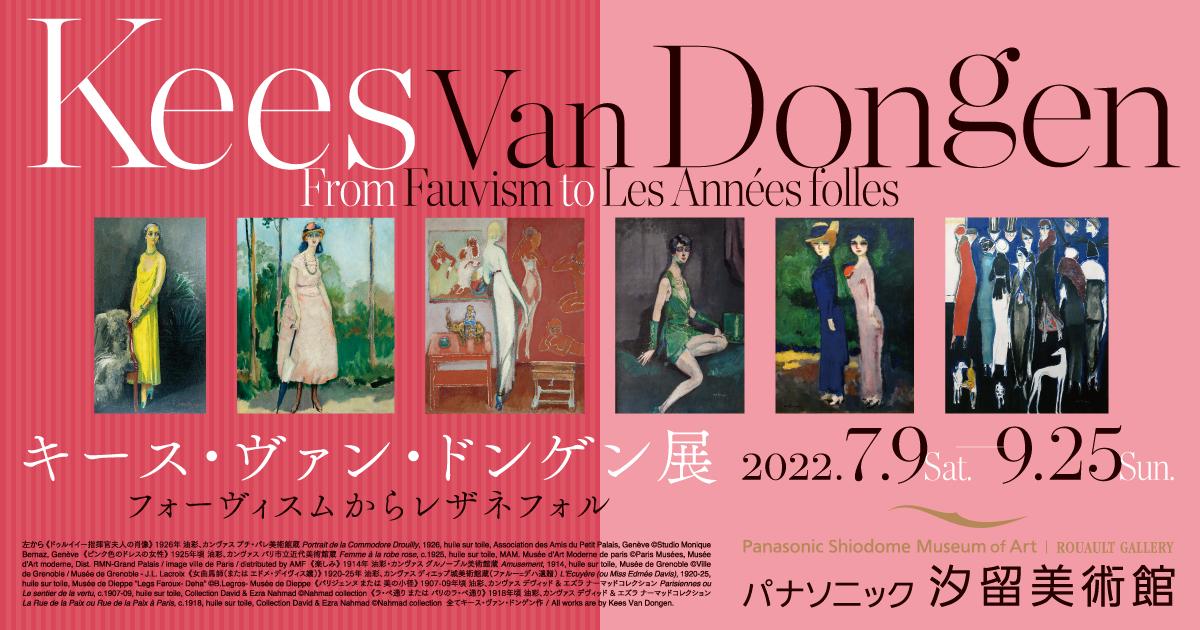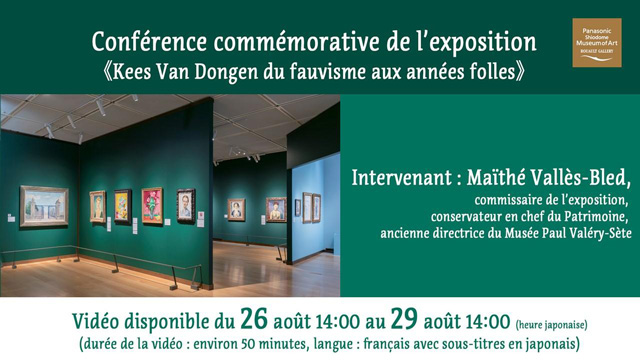Kees Van Dongen: From Fauvism to Les Années folles

To those who wish to visit the Kees Van Dongen exhibition
Please make a timed entry reservation from the museum website.
All advance reservations are no longer accepted.
The museum is expected to get crowded during the last few days of the exhibition, which may make it difficult to secure a timed entry reservation. We recommend visiting as early as possible.
General Information
- Dates
- July 9 – September 25, 2022
- Hours
- 10 a.m. – 6 p.m. (Admittance until 5:30 p.m.)
*Open until 8 p.m. (admittance until 7:30 p.m.) on August 5 and September 2
- Closed
- Wednesdays and August 12 – 17
- Admission
- Adults: ¥1,000
Visitors aged 65 or over with valid documentation: ¥900
Students (College): ¥700
Students (Middle and high school): ¥500
Admission is free for children in elementary school or younger.
Admission is free for disability passbook holders and up to one accompanying adult.
- Organizers
- Panasonic Shiodome Museum of Art, NHK, NHK Promotions Inc.
- Supporter
- Embassy of France in Japan/Institut français du Japon, Minato City Board of Education
Exhibition overview
The artist Kees Van Dongen (1877–1968) was born and raised in the Netherlands and studied at the Royal Academy of Fine Arts in Rotterdam. At the age of 20, he spent a few months living in Paris before returning to Rotterdam but moved to Paris for good just two years later, settling in Montmartre and establishing his own studio. Even as a young artist in the Netherlands, Van Dongen’s paintings had been characterized by bold brushstrokes, a style that led him to an early interest in Neo-Impressionism. He later came to the forefront of the Fauvist movement, painting with vivid, saturated, and highly expressive colors. Van Dongen’s name soon became synonymous with the grace and sensuality of the human body—especially the female form, which he depicted in a resplendent palette that was also evocative of the artist’s internal feelings.
This exhibition examines how an extraordinary artist came into his own as a Fauvist painter. Several facets of his career are highlighted, from his studies of color and form in the years leading up to World War I to his favorite subject—the human body. Also covered is his work during the Roaring Twenties, which were known in France as the Années Folles, or “crazy years.”
During the 1920s, Van Dongen began mingling with members of high society, where he was in demand as a portraitist. His portraiture was typified by slim, elongated, graceful figures depicted with a refined palette. This style earned Van Dongen high praise among the French bourgeoisie.
This exhibition—the first Van Dongen exhibition to open at a Japanese museum in 44 years—is divided into three sections: From Neo-Impressionism to Fauvism, After Fauvism, and the Années Folles. Through a variety of exceptional works gathered from around Japan and the world, the exhibition highlights the artist’s talent for drawing human figures and his sensual depictions of the human body, both evident throughout his career. It also explores how the various colors and forms that defined each period of his career came together in beautiful harmony.
Related events
Online Commemorative Lecture
Kees Van Dongen: From Fauvism to Les Années folles
- Video availability
- 2 p.m., August 26, to 2 p.m., August 29
- Length
- About 50 minutes
- Lecturer
- Maïthé Vallès-Bled (exhibition curator, former director of Musée Paul Valéry (France), and certified chief cultural heritage curator)
- The lecture will be given in French.
- Japanese subtitles will be provided by Akiko Utsunomiya.
- This lecture may not be recorded in any way, including by video or audio recording or screen shots. Unauthorized use or reproduction of the lecture is strictly prohibited.

Curator Slideshow Lecture: Focal Points of the Exhibition
August 6 and August 26
3 – 3:30 pm
Limited to the first 50 visitors
No reservation required
No additional charge (however, a ticket to the exhibition is required)
Location: Fifth Floor Hall, Panasonic Tokyo Shiodome Building
- Admission to the exhibition requires a timed entry ticket
- Event details are subject to change. Check the museum website for up-to-date information.
- Please note that this Lecture will be conducted in Japanese.





